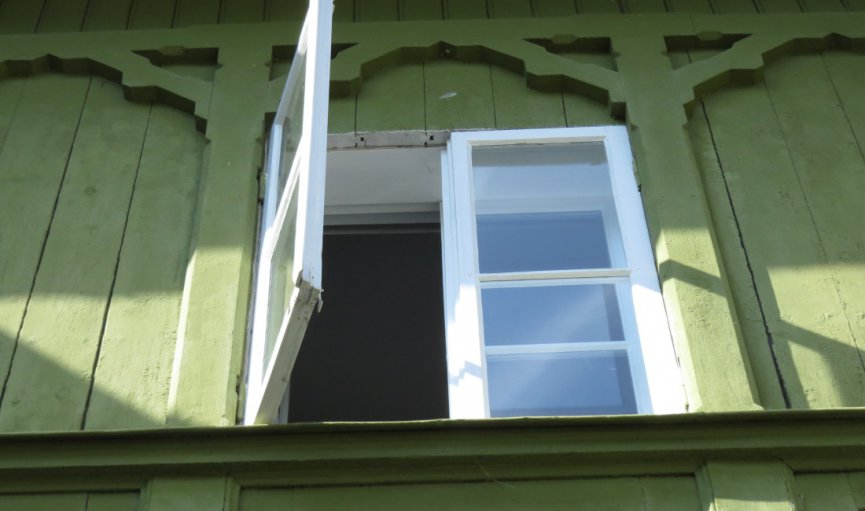In all cultures clapping is an important social signifier, but I venture to suggest that Latvia outdoes most places in making this simple activity an act of sometimes bewildering complexity and etiquette. An incorrect clap is a serious social faux pas, and most claps, it seems, are deemed incorrect.
I was recently at a soccer tournament for under-9s. It was great to see these kids all giving of their best and as one of the coaches rightly said at the end when they were lined up for prize-giving, "Any one of these teams would have played better against Andorra than the national team did a few days ago."
I thought it was a good line and laughed out loud. None of the other parents and family members in the stands found it as funny as me, so my laughter was still reverberating as the players filed forward one at a time, starting with the last-placed team, to shake hands with the organizers and receive their medals.
Something was wrong. It took me a few seconds to realize what it was: no-one was clapping. So I started clapping, because I think it's just as important to clap those who didn't win as those who did. Gradually, everyone else joined in and polite applause started to flow. But by the time the fourth and fifth teams had made their ways forward the life was ebbing from the applause and by the time the winners collected their medals it was just myself and a literal handful of clappers left. It gave the whole ceremony a curious topsy-turvy quality. It is quite conceivable the whole thing could have passed in silence.
Another good example of the Latvian clapping conundrum was a concert I attended at the lovely Liepāja concert hall Lielais Dzintars. I should have realized that having a program involving a mixture of jazz and classical artists was a recipe for trouble. When it was classical musicians playing classical music everything was fine. People clapped between pieces. When it was jazz musicians playing jazz music everything was fine. People clapped after each solo. But when it was a bit of both... well, you can imagine the confusion, the looks of disapproval from the classicists as the jazz fans applauded a trill on a French horn, and the looks of disdain from the jazz fans to the square classicists when they failed to acknowledge a great improvisation had just gone down.
It was a similar but not identical situation at a concert given by the wonderful Guatemalan singer/songwriter Gaby Moreno. Without doubt, everyone in the concert hall - this time in Cēsis - loved the concert, and I rate it one of the best I have ever heard. But you couldn't help feeling Gaby had to work very hard to get the crowd to loosen up and show a bit of Latino alegria instead of their habitual Baltic restraint. An invitation to dance in the aisles resulted in all of about three couples actually doing so, much to the annoyance of other concert-goers who felt their view was now impeded.
When the concert ended, the applause was huge. It started off like applause anywhere, spontaneous and uncoordinated, but within a few seconds it morphed into that form of applause that in Latvia is supposed to signify even more intense approval but which I always find slightly unsettling: a rhythmical military clap-clap-clap-clap that is in equal parts accolade and demand. On and on it marches with a left-right-left-right, metronomic quality. It is almost impossible to resist. If you try to carry on "freeform" clapping, it does not contribute to the greater good and becomes insignificant. It solicits looks of disapproval, as if failure to subject your will to the greater will and clap in the same rhythm as everyone else makes you socially suspect, a flap-handed anarchist or - worse still in this land of song - someone with absolutely no sense of rhythm.
When the performer reappears on stage, the binary clap may break down, but if she happens to wander towards the wings again, rest assured it will be back: left-right, left-right, stamp, stamp, stamp, stamp, stay, play, stay, play! There is something rather self-congratulatory to it, as if the audience is applauding its own quorum of good taste and approval.
On the other hand - if you'll pardon the pun - there is a form of Latvian clapping I have come to like. This is the applause a pilot receives from his passengers when he manages to touch down on a runway without destroying the undercarriage. The first time I heard this I admit I thought something horribly condescending along the lines of "Oh, these Eastern Europeans and their unfamiliarity with commercial flights!" But now everyone in Latvia has flown more than I have and they still do it. And now I join in, thinking as I do so not "Ha ha this is a postmodern joke because we all know flying is statistically safer than most other forms of travel" but "Who knows? Maybe we did just cheat death after all. That has to be worth a quick round of applause."
There is a famous Zen Buddhist riddle that asks what is the sound of one hand clapping. It's supposed to be enigmatic and thought provoking, but in fact it is quite easily explained if the hand in question is Latvian.
































